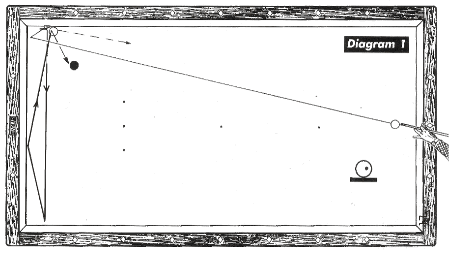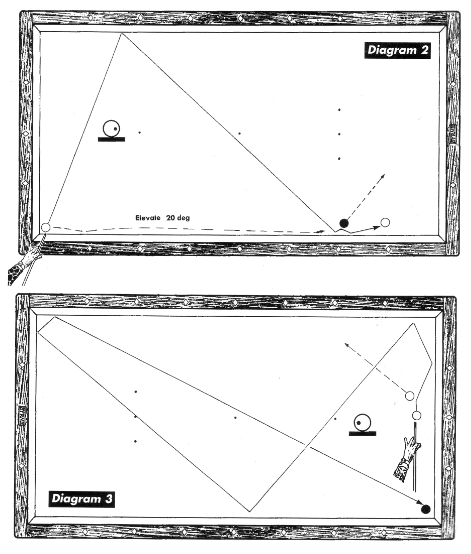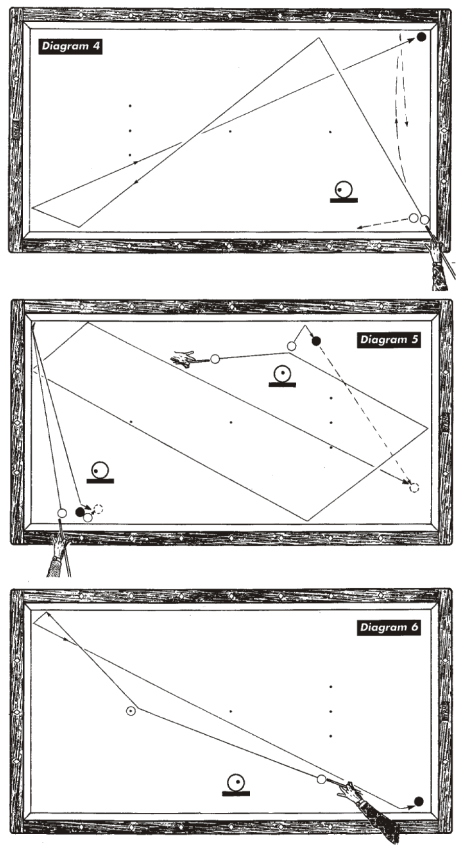|
Unbenanntes Dokument
|
Book
Review
Im Juni 2002 veröffentlichte der weltweit erfolgreichste
Autor von Billard-Büchern, Mr. Robert Byrne, eine außerordentlich
positive Rezension meines Dreiband-Werkes in dem führenden
amerikanischen Billard-Magazin "Billiards Digest", über
die ich mich persönlich sehr gefreut habe. Einige zusammengefasste
Zitate: "Das neue, bislang umfassendste Werk über Dreiband-Billard
ist ein beeindruckendes Buch mit einer erstaunlichen Menge von
Kostbarkeiten – genug, um einen zu bewegen, die Sprachschule
zu besuchen (um Deutsch zu lernen) – eine riesige Leistung!"
"Dr. Hüpper zeigt unter anderem Stöße, an
die die meisten Spieler, selbst sehr gute, in der Partie kaum
denken würden. Einige davon werde ich besprechen - es hätten
hundert mehr sein können." – "Tatsächlich
könnte ich ein ganzes Buch schreiben über interessante
Dessins, alle gestohlen von Dr. Hüpper."
Es folgen die von Byrne vorgenommenen Dessin-Analysen aus dem
1. Band des Handbuchs (Zeichnungen von R. Byrne neu gestaltet).
Ich bin sicher, dass sie Ihr Interesse finden.
Robert Byrne on Billiards:
Surprising shots from Dr. Hüpper
There is an embarrassment of riches in an impressive new three-cushion
book by Gemany's Dr. Gerhard Hüpper. It's odd that the most
comprehensive books on pool an three-cushion were both published
in the year 2001. Unfortunately for American players, one is in
French and the other in German.
Now comes Dr. Hüpper with his Handbuch des Billarspiels Dreiband
(Handbook of Three-cushion Billiard Play). His colossal large
format effort is divided into Book 1, on shots, and Book 2, on
special problems, psychology, position play, and systems. Together
they total 540 pages and 1,800 precise diagrams. It's almost enough
to drive a person to language school. For information, contact
Litho-Verlag, T. Lindemann (that's the publishers name) at Mittelstraße
4, 34466 Wolfhagen, Germany
In this article, I will diagram a few shots from Dr. Hüpper's
book that most players, even most
good players, might not think of in a game. There are a hundred
more I could have selected.
 In
Diagram 1 is a shot that is not as hard as it looks,
even from the unpromising position shown. It's not so difficult
to contact two rails first and then get a fairly full hit on the
first object ball. The topspin on the cueball helps send it across
the table for two or three more rails. If the cueball doubles
the end-rail and then crosses the table to hit another side rail,
you end up with six rails. In
Diagram 1 is a shot that is not as hard as it looks,
even from the unpromising position shown. It's not so difficult
to contact two rails first and then get a fairly full hit on the
first object ball. The topspin on the cueball helps send it across
the table for two or three more rails. If the cueball doubles
the end-rail and then crosses the table to hit another side rail,
you end up with six rails.
This happens to be one shot that I would'nt overlook myself, as
it is one of my favorites. I shoot it even when it's not the easiest
option, because I enjoy the reacion it gets from onlookers, especially
my opponent. If I make it, I don't mind so much losing the game.
 Two
shots are suggested in Diagram 2. The solid line
shows a shot that Sang Lee once made in a game against George Ashby.
Dr. Hüpper recommends (if I can believe my dictionary of the
German-English language) maximum right English off the first rail
to give the best angle of approach into the second rail.
Two
shots are suggested in Diagram 2. The solid line
shows a shot that Sang Lee once made in a game against George Ashby.
Dr. Hüpper recommends (if I can believe my dictionary of the
German-English language) maximum right English off the first rail
to give the best angle of approach into the second rail.
The dashed line requires a slight right massé with the cue
elevated about 20 degrees and a soft stroke. If the cueball hits
the long rail twice, there is a good chance of getting the third
rail after hitting the first ball.
In Diagram 3 is a shot that probably wasn't available
to
Willie Hoppe and Welker Cochran because the cloth in the old days
wasn't fast enough and the rubber wasn't as lively as it is today
on heated European tables.
Because I am almost as old as Hoppe and Cochran would be if they
were still alive, I seldom think of shots like this, which are only
possible on the new style of equipment.
 A variation of the long back-up can be seen in Diagram 4.
I am not convinced that in the given position it is a higher percentage
shot than jacking up a bit and curving the cueball for a twice-across
shot as indicated by the dashed line. The twice-across shot, of
course, is ruled out if the red is a few more inches away from the
end-rail, which would put it in the way of the cueball's path to
the first rail.
A variation of the long back-up can be seen in Diagram 4.
I am not convinced that in the given position it is a higher percentage
shot than jacking up a bit and curving the cueball for a twice-across
shot as indicated by the dashed line. The twice-across shot, of
course, is ruled out if the red is a few more inches away from the
end-rail, which would put it in the way of the cueball's path to
the first rail.
I've always been attracted by the ingenuity of time shots in which
the secong object ball is deliberately relocated. The Germans call
them Begeg-nungsball (encounter the ball) In French the shot is
a rendezvous. Dr. Hüpper gives 22 examples, two of which can
be seen in Diagram 5.
The position in the final Diagram 6 comes up a
lot. Nothing is easy. Sometimes it's best to hit the object full
and a little to the left with heavy draw an right English in an
attempt to bring the cueball
down to the lower long
rail with the hope that the spin is sufficient to carry the cueball
around the table.
Another possibility is to follow the cueball straight through the
object ball with high right and hope for the best.
Sometimes it's possible to hit the first object ball so thin on
the right side that the cueball hits the end rail first, then the
long rail close to the corner and finally a third rail just before
the red
ball, but that would be very tough in the diagrammed position.
Dr. Hüpper suggests an option that doesn't
involve the risk of breaking your arm: a diagonal
backup using moderate right English. Why didn't I think of that?
I could go on - in fact I could write an entire book of shots,
stolen from Dr. Hüpper
|
Unbenanntes Dokument
|